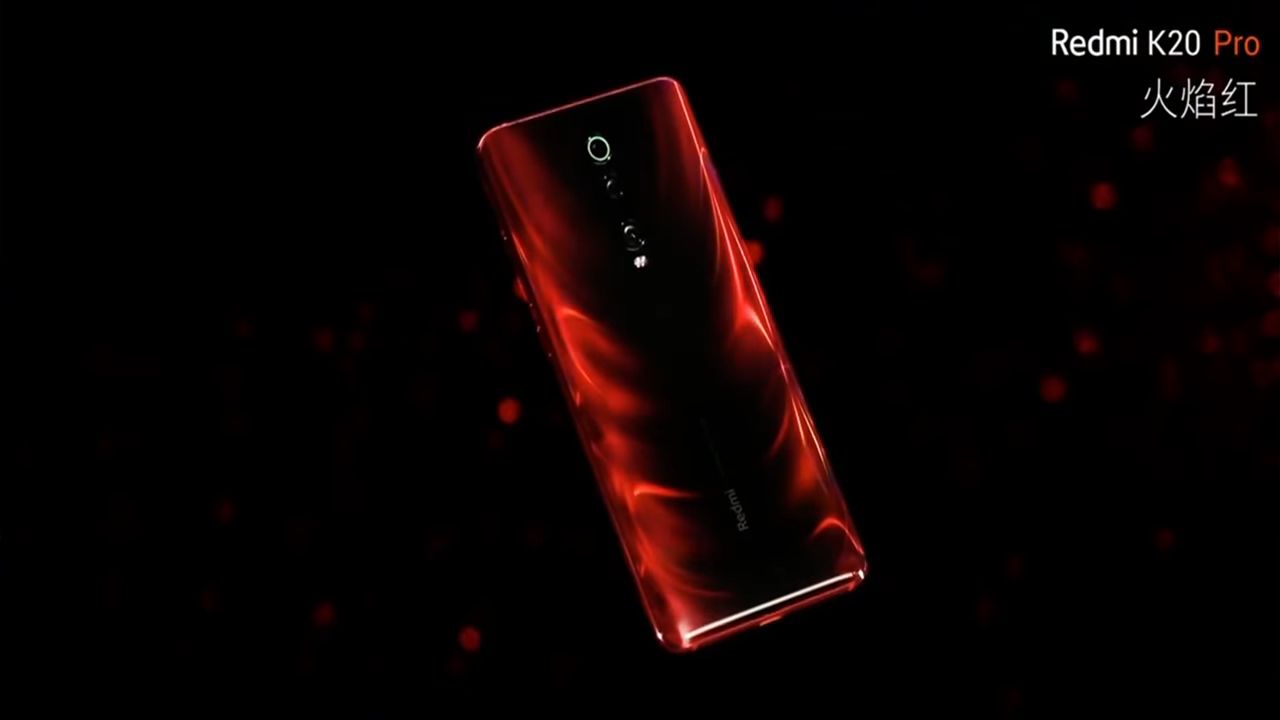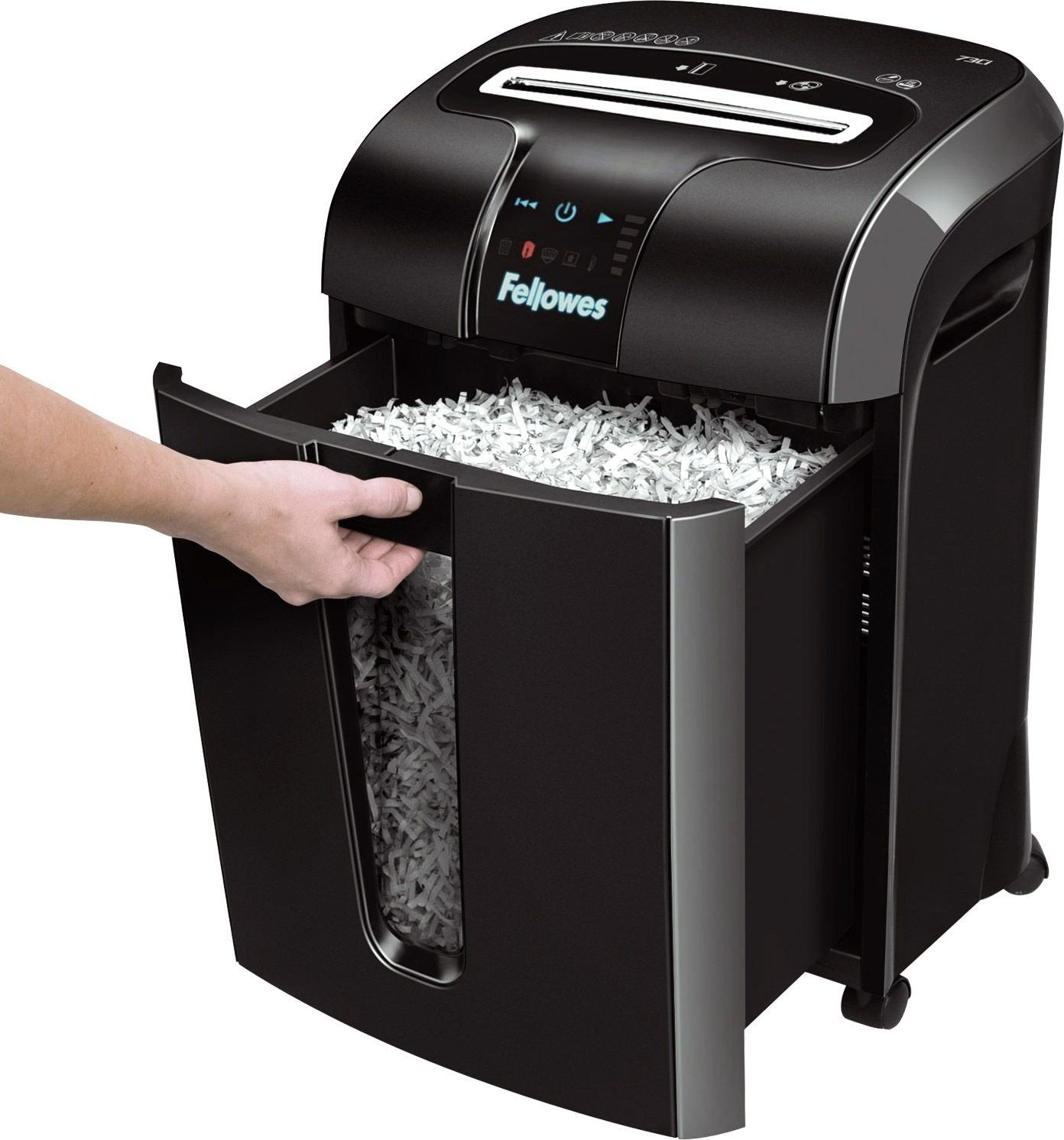Best D/A Converters in 2025

Most likely, you have not even thought about the fact that you use digital-to-analog converters every day. They are used everywhere - in personal computers and laptops, tablets and smartphones, etc. The fact is that human hearing is not able to perceive a digital audio signal, for this it is necessary to convert it to analog. For this, so-called DACs are used. This article will help you understand the types of such devices, the criteria for their selection and introduce you to the most popular models in 2025.
Content [Hide]
What are digital-to-analog converters?
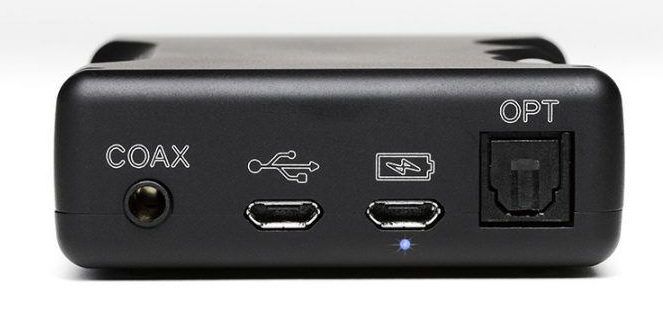
Without the use of sound converters, the user will not be able to enjoy digital music. The problem is that most of the built-in DACs, which are found in almost all electronic devices with media support, are not good enough in terms of playback. Simple DACs will add a high level of noise, will not be able to read high resolution files, etc. That is why the use of an additional device is an important upgrade for any high-quality audio system, regardless of its composition.
There are many varieties of digital-to-analog audio converters, depending on the shape and overall dimensions, functionality, and the number of inputs and outputs. First of all, distinguish:
- portable devices;
- desktop or stationary DACs.
Portable converters are attached directly to a computer or phone, they are compact in size and relatively inexpensive. They do not require a separate power supply and, as a rule, are equipped only with a headphone jack and a line output for connecting to an audio system.
A more functional and expensive option are desktop or stationary converters. They are much larger, require a separate connection to the power supply, and have a wide variety of inputs and outputs. Connecting to a source with a digital device can be done using Bluetooth or Wi-Fi. Such converters support many types of audio files and have a built-in volume control.
In addition, DACs are divided depending on the maximum bit depth, which characterizes the number of signal levels at the output. The higher it is, the better the quality of sound reproduction. There are models with bit depth:
- 16 bits;
- 24 bits;
- 32 bits;
- 64 bits
Among other parameters that can be used to classify a DAC, it is worth highlighting the number and type of inputs and outputs of the device, the maximum sampling rate, the type of signal encoding (DSD or PCM), etc.
How to choose a digital-to-analog converter?

What is the best DAC to buy? Quite a complicated, at first glance, the issue is easily resolved if you follow the recommendations below. Before making a purchase, you must clearly define the purpose of the new device and expectations from it. Is it worth it to think about purchasing a professional transducer without having an equally high-quality audio system? Does it make sense to buy a budget converter and expect high-quality sound from it? The modern market offers a wide variety for the selection of the necessary model with different characteristics and cost. The selection criteria are quite simple. What you need to pay attention to first of all:
- Number and type of digital inputs.
This parameter directly depends on the devices that are planned to be used as a sound source. Modern converters are most often connected to a computer using a USB port. In addition, optical and electrical (coaxial) connection types are used. Professional devices also use the “advanced” AES / EBU connection option using balanced cables that are not subject to interference from the external environment.Recently, models with the ability to connect to external devices using Bluetooth or Wi-Fi are increasingly appearing.
- Optimal bit depth and sampling rate
These characteristics determine the quality of reproduction, since they are responsible for the accuracy of the signal conversion. Bit depth - an indicator of the number of signal levels at the output of the converter. For audio CDs, the bit depth is 16 bits, while Hi-Res audio is 24 bits or higher. Sampling rate - the number of reports in a period of time when digitizing. For a CD soundtrack, this figure is 44.1 kHz, DVD - 48 kHz, Hi-Res - 96 kHz or 192 kHz, etc.
- Type of analog outputs
The type of outputs is determined by the inputs of the speaker system. For example, to connect to an audio system with balanced inputs, the DAC must have such outputs. Most converters are equipped with one or more headphone outputs (jack or mini-jack).
- Dimensions
The dimensions of the device, first of all, depend on its purpose. Recently, models with compact dimensions are gaining popularity. Such devices easily fit in your pocket and are most often used to convert the audio signal from a smartphone or tablet. For especially demanding connoisseurs of quality music, more voluminous stationary options with extended functionality are more suitable.
- Additional functions
Among the additional functions that can be very popular, it is worth highlighting:
- the presence of analog inputs and the ability to adjust the outgoing signal (using the device in preamplifier mode);
- the presence of a lamp output;
- the presence of a headphone output;
- the ability to connect to the device using wireless networks;
- remote control, etc.
- Device cost
In this case, the marginal price of the device is determined not only by the financial capabilities of the buyer, but also by what sound equipment and digital signal source will be used. It makes no sense to buy an expensive DAC if you are using a weak audio system. At the same time, you should not save money if it is planned to be replaced or upgraded to a higher quality level in the future.
- Brand Influence
Which brand converter is better? According to buyers, it is better to focus on brands that have been proven over the years. Among the recognized world leaders in the production of digital-to-analog converters are the Japanese company Teac, the British Cambridge Audio, the Austrian Pro-Ject and many others. These are the manufacturers that have been able to gain popularity around the world and will certainly not allow a potential buyer to be disappointed in their products.
- Listening
It is extremely important to hear a potential acquisition live before buying. If this is not possible, then it is imperative to read the reviews of real owners of such devices or experts. Below is a rating of popular models of digital-to-analog converters with a description of their technical characteristics, as well as advantages and disadvantages.
The Best Portable DACs in 2025
Portable converters are gaining more and more popularity. They are extremely convenient to use, as they are often a USB-module or a miniature unit, the size of a little more than a matchbox. Such devices, as a rule, are relatively inexpensive - their average price does not exceed 10,000 rubles, there are models costing up to 2,000 rubles.True, their functionality is very limited and focused on the most unassuming user.
| Fiio Taishan-D03K | Pro-Ject DAC Box E | M-Audio Micro DAC 24/192 | Cambridge Audio DacMagic XS | M-Audio Super DAC | |
|---|---|---|---|---|---|
| Max. capacity, bit | 24 | 24 | 24 | 24 | 24 |
| Max sampling rate, kHz | 192 | 192 | 192 | 192 | 192 |
| Signal-to-noise ratio, dB | 95 | - | 114 | 103 | 117 |
| line input | - | - | - | - | 1 |
| coaxial input | 1 | 1 | - | - | 1 |
| optical input | 1 | 1 | - | - | 1 |
| line out | 2 | 1 | - | - | 1 |
| optical output | - | - | 1 | - | - |
| Headphone connection | mini jack 3.5 | - | mini jack 3.5 | mini jack 3.5 | jack/mini jack |
| USB | Yes | Not | Yes | Yes | Yes |
| Dimensions, mm | 62x21x49 | 120x32x100 | 71x23x10 | 30x53.5x10 | 90x30x90 |
| Weight, kg | 0.05 | 0.25 | 0.03 | 0.1 | 0.21 |
| Average price, p | 2200-2500 | 6600-7000 | 8000-9800 | 9600-14000 | 16000-20000 |
Fiio Taishan-D03K
votes 11
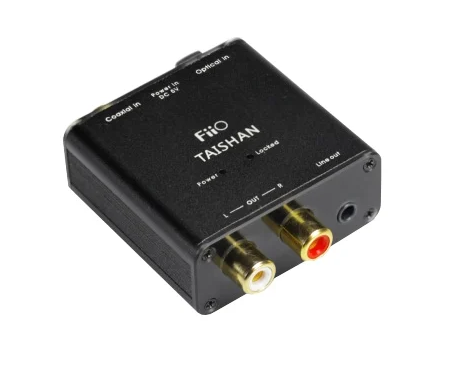
A real hit of sales and a leader in terms of price-quality ratio. So compact and discreet that it can be hidden anywhere. The filling of the device is packed so compactly that it seems that it consists of only connectors. There are several of them at once: optical and coaxial - at the input and two linear plus a mini-jack for headphones - at the output. But connecting to a PC via USB will not work - the port is used only for power. The audio chip significantly improves the sound quality, the amplification reaches 3.5 dB, and the harmonic coefficient does not exceed a hundredth of a percent - a very worthy indicator for a portable device.
- coaxial and optical inputs with switch;
- support for audio signal up to 24 bit/192 kHz;
- simple and convenient to use;
- miniature sizes;
- LED signal presence indicator;
- inexpensive price;
- headphone output mini jack 3.5 mm;
- cable and power supply are included.
- using Mini-USB, not Micro;
- inability to adjust the input signal;
- Not the best sound when using headphones.
Project DAC Box E
votes 5
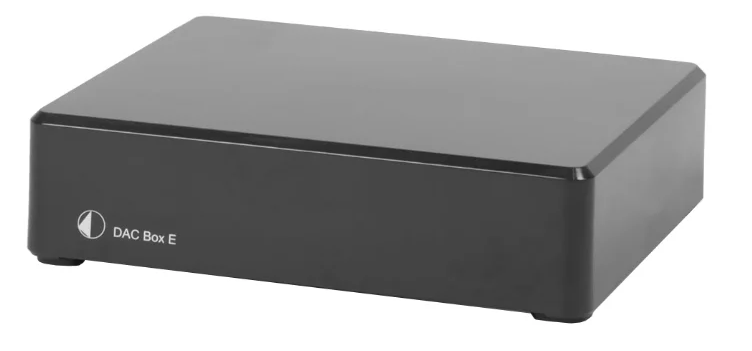
Inexpensive converter with a minimum set of functions. Despite the cheapness, it has a fairly high-quality sound when used with a completely diverse audio equipment. All RCA connectors have gold-plated contacts, leadless SMD components are used inside the design, additional electronic shielding is provided - all this minimizes the level of noise and interference and makes the device stable. The output connectors of the device are absolutely not demanding on the quality of cables due to high linearity, and a high signal level allows you to use any amplifiers. Its compact dimensions allow it to be hidden in a rack with equipment and not to be disconnected from the mains due to its high energy efficiency. In terms of sound quality, the device is far ahead of players with standard sound cards, so DAC Box E will be a great addition to any stereo system, even an entry-level one.
- stable operation and low interference due to the use of SMD technologies;
- reduction of noise and interference of the output stage due to the use of gold-plated RCA connectors;
- compact overall dimensions;
- no problems with cables due to low input impedance;
- reduced power consumption when using Standby mode;
- high quality signal processing and filtering.
- no headphone output;
- lack of USB connectivity.
M-Audio Micro DAC 24/192
votes 3
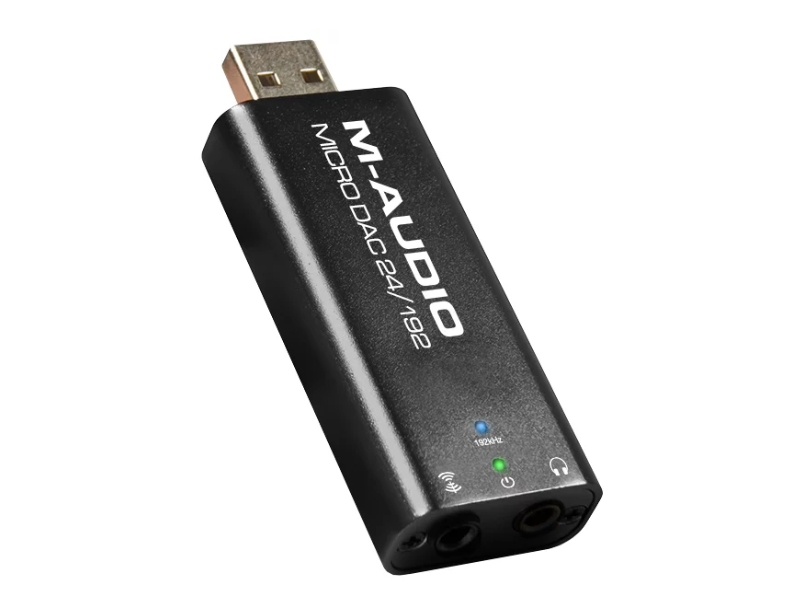
A miniature device that looks like a regular USB flash drive. Some attribute this type of DAC to external sound cards, but this is not entirely correct. There are two outputs on the case - digital optical and mini-jack 3.5 mm.The device is equipped with gain control, which allows you to use headphones with different impedance. To reduce interference and interference, the USB plug and mini-jack connector are gold-plated. Additional noise protection is provided by SMD components, the use of which significantly affected the price of this model, which cannot be called democratic.
- quality sound;
- high-quality aluminum body;
- the ability to convert the audio signal up to 24 bits and 192 kHz;
- optical output and 3.5 mm headphone jack;
- gold-plated USB plug and mini-jack;
- the presence of gain control;
- digital optical cable included;
- good assembly and components;
- problems with drivers for Windows;
- few exits.
Cambridge Audio DacMagic XS
votes 0
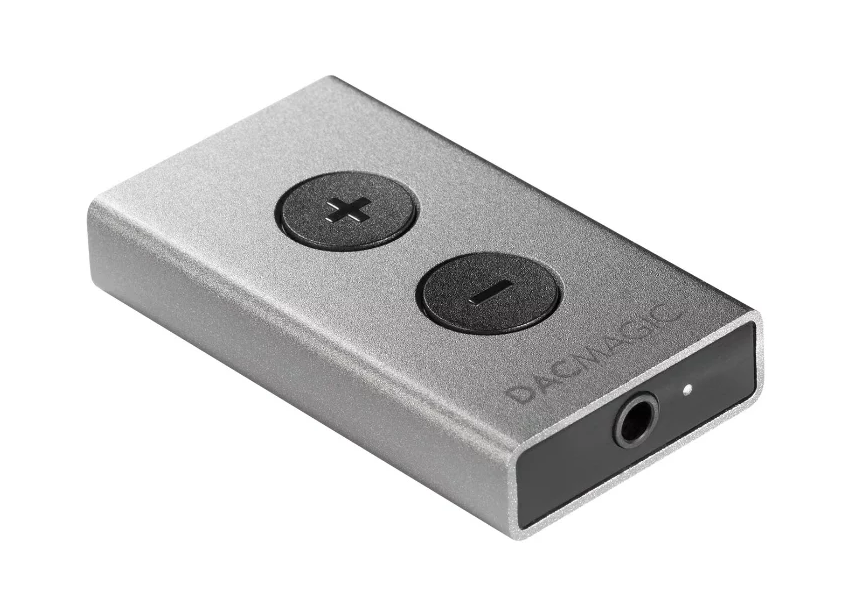
A miniature DAC that functions as a telephone amplifier or converter for connecting a tablet or laptop to a stereo system. Lightweight and compact, thanks to the aluminum body (dimensions smaller than a matchbox). The signal is received via the USB connector. The main distinguishing feature of this device is the ability to adjust the volume (as many as 54 levels!), And this happens immediately when connected to the source. The device is powered directly from the device to which it is connected. This affects the level of its charge, however, not very significantly. DacMagic XS is famous for its good audio path - almost all interference and noise are filtered out. Therefore, this DAC will be an excellent solution for those who like to listen to music from mobile devices.
- compact dimensions;
- excellent sound quality with subtle selection of instruments;
- unusual design;
- powerful output signal 105 MW;
- transferring the volume control function to the device when connected to a computer;
- ultra-precise volume control;
- elimination of noise and interference due to high-quality filtering.
- frequent problems with the micro-USB connection;
- periodically heats up during use;
- rather high price
M-Audio Super DAC
votes 1
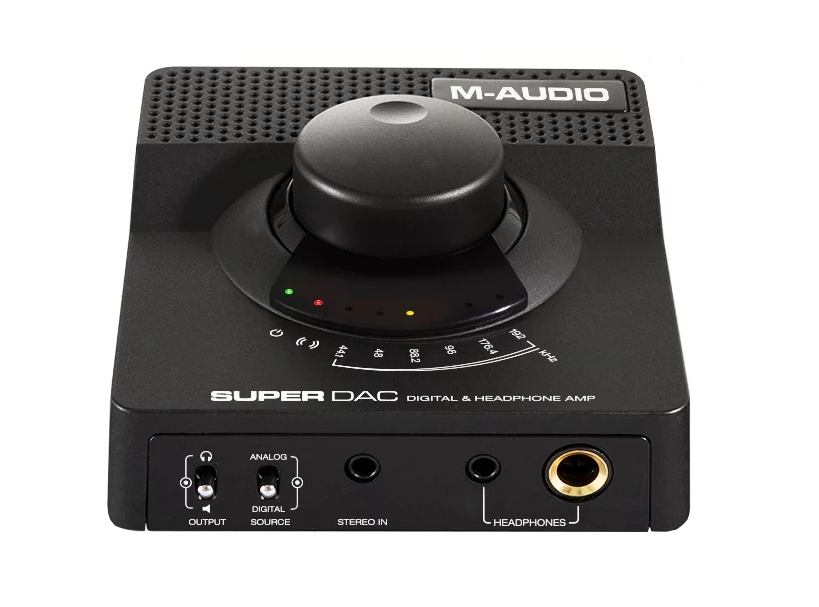
A compact model for advanced users from the American company M-Audio. The converter has a compact size and does not take up much space. On the top panel there is a volume control and LED indicators that display the operating mode and the current sample rate. Thanks to multiple inputs and outputs, the device can work with multiple devices at the same time. The choice of device for playback is carried out using a special switch. The Super DAC is equipped with two headphone jacks - a 3.5mm mini-jack and a gold-plated 6.3mm full-size jack. The converter can be powered via a USB cable when connected to a computer.
- attractive appearance;
- the ability to select 6 different sampling rates;
- two headphone outputs;
- convenient management;
- compact dimensions;
- three types of inputs: optical, linear and coaxial;
- excellent chip from Wolfson;
- the presence of a power supply in the basic configuration.
- high price;
- the need to install drivers.
Top best stationary DACs in 2025
Stationary transducers are designed for more sophisticated users - those who can truly appreciate the sound quality. Their price can vary from several tens of thousands of rubles to several hundred.The cost of individual stationary DACs is comparable to the cost of a new car. Therefore, it is especially important not to make a mistake at the stage of choosing a new device - the wrong decision can lead to large financial losses.
| Cambridge Audio DacMagic 100 | Arcam irDAC-II | Denon DA-300 USB | TEAC UD-301 | Maranz HD-DAC1 | |
|---|---|---|---|---|---|
| Max. capacity, bit | 24 | 24 | 24 | 32 | 24 |
| Max sampling rate, kHz | 192 | 384 | 192 | 192 | 192 |
| Signal-to-noise ratio, dB | 113 | 117 | 112 | 105 | 106 |
| line input | - | - | - | - | 1 |
| coaxial input | 2 | 2 | 1 | 1 | 2 |
| optical input | 1 | 2 | 2 | 1 | 1 |
| line out | 1 | 2 | 1 | 1 | 2 |
| balanced output | - | - | - | 1 | - |
| Headphone connection | - | Mini jack 3.5mm | Jack 6.3mm | Jack 6.3mm | Jack 6.3mm |
| USB | Yes | Yes | Yes | Yes | Yes |
| Bluetooth | Not | Yes | Not | Not | Not |
| Dimensions, mm | 106x46x130 | 194x44x124 | 170x57x182 | 215x61x238 | 250x90x270 |
| Weight, kg | 0.5 | 1.1 | 1.5 | 2 | 5 |
| Average price, p | 12500-17000 | 40000-45000 | 35000-38000 | 50000-60000 | 80000-90000 |
Cambridge Audio DacMagic 100
votes 7
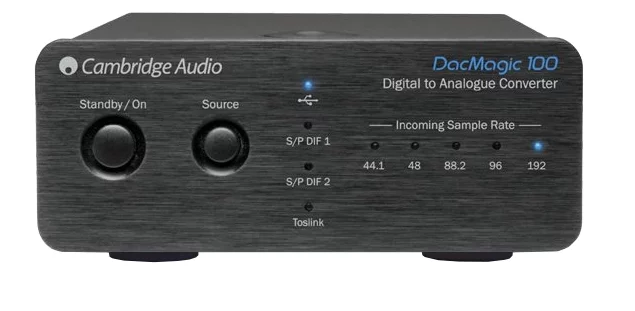
High-quality and reliable converter from English Cambridge Audio. You can connect to any audio source - from a game console to a music player. For connection, two coaxial and one optical inputs, as well as a USB connector are used. The Wolfson audio chip, although it is quite “level”, does not reach the top-class processors. At the same time, the device provides good sound quality and detail for its price category. However, the main thing in this DAC is the build quality and durability. This device will definitely last for many years without a hint of unsuitability.
- robust metal housing that minimizes pickups and noises;
- compact and pleasant appearance;
- convenient buttons and LED indicators;
- many connectors, including USB-B with the ability to convert the audio signal up to 24 bit 192 kHz;
- the ability to simultaneously work with four external devices;
- support for a variety of audio formats;
- six sample rates to choose from;
- proven chip from Wolfson, providing excellent processing quality, detail and depth of sound;
- relatively affordable price.
- power supply from an external source;
- no DSD support;
- there is no adjustment of the output signal;
- no headphone amp.
Arcam irDAC-II
votes 2
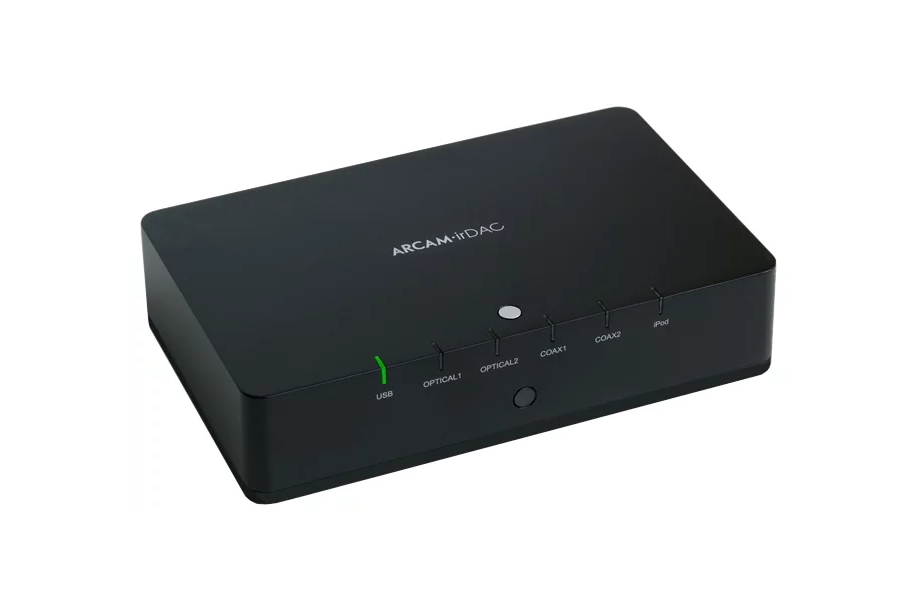
Excellent DAC from Arcam, one of the leaders in its class. A true representative of a new era in transducer development. It looks like a router - a line of indicators and an antenna at the back. Connection with sound source devices is carried out not only through standard inputs, of which there are as many as four, but also via Bluetooth and Wi-fi using Apple AirPlay technology, which will certainly appeal to iPhone and iPad owners. The device is configured using a special interface. A high-quality TI PCM179 processor provides high-quality conversion, even despite the not very top-end “strapping” of microcircuits. The device sounds clear, lively and detailed. Well worth the money, especially with the latest connectivity options available.
- compact device with unobtrusive design;
- advanced features and high resolution;
- the ability to work in wireless mode;
- DSD stream playback without conversion;
- excellent depth and perspective control of the soundstage;
- headphone output and bluetooth support;
- clear and dense sound, clear separation of instruments;
- remote control included.
- no 6.3 mm headphone jack (requires an adapter);
- no DSD support;
- no balanced output.
Denon DA-300 USB
votes 6
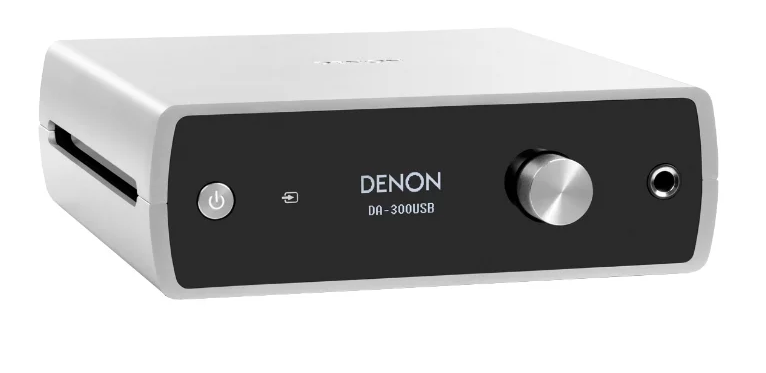
A quality model from the Japanese leader in the production of audio equipment - Denon. The DA-300 USB is packed with the finest hardware and delivers great sound. The highlight of this model is the ability to install both horizontally and vertically. At the same time, the characters on the OLED display also change their orientation. The device has the most simplified control - only the settings knob and the power button. There is a 6.3 mm headphone jack on the front panel - no adapter is required for them. The device has two optical and one coaxial input and one line output. An additional plus is support for the DSD standard.
- clear open sound with excellent high-frequency transmission;
- excellent detail;
- a large selection of audio inputs;
- minimalist design with OLED screen;
- possibility of horizontal and vertical installation;
- reliable design;
- the ability to convert audio files of various formats;
- Can be used as a headphone amplifier
- DSD support.
- lack of cables in the package;
- rather sluggish low frequencies;
- when headphones are connected, the line output continues to work;
- the need for an adapter for 3.5 mm headphones.
TEAC UD-301
votes 11
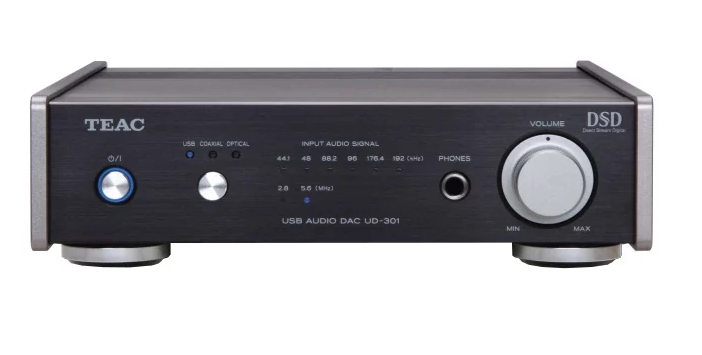
A true leader in its class. High-quality PCM 1795 converter, compact case, support for 24/192 and DSD standard - this is not a complete list of advantages of this DAC. The UD-301 is equipped with a powerful headphone amplifier, balanced output and the ability to adjust the use of each audio output as a preamp. The device has a built-in power supply and means to minimize jitter.Well, and most importantly, for which this model has earned immense popularity - chic sound quality. This indicator is at the highest level - absolute detail, complex structure of timbres, amazing depth of the scene. In general, this is a real find for music lovers, which deserves the highest ratings.
- high sound quality;
- convenient control, availability of all necessary indication;
- good built-in headphone amplifier using CCLC technology to reduce noise;
- DSD support;
- APS power saving mode with automatic shutdown after 30 minutes of inactivity;
- the ability to increase the sampling rate up to 192 kHz;
- excellent signal-to-noise ratio.
- high price.
Maranz HD-DAC1
votes 6
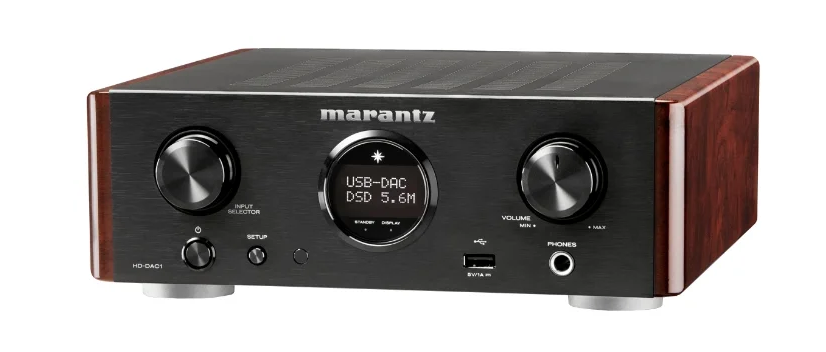
A quality device with an amazing design. The appearance of this device gives some nostalgia, the body is made in the colors of precious metals, and the side panels are stylized as a lacquered walnut. From what's inside - a motorized volume control, a powerful power supply, jitter minimization tools and a Crystal Semiconductors audio chip. The device provides a fundamentally new level of sound, previously characteristic only of models from the top class, which differ in price by several times. Maranz HD-DAC leaves the user alone with the music and creates a real sense of presence. The perfect choice for professional audiophiles.
- clear sound - well-developed bass and bright high frequencies;
- the ability to work with headphones with high impedance;
- quality to the smallest detail;
- the ability to play DSD;
- original design;
- convenient remote control;
- high-quality audio processor and other "stuffing" of the device.
- high cost;
- no balanced output.
Brief conclusions
The audio equipment market is replete with various options for devices for converting a digital signal to analog. They differ in their purpose and functionality, as well as cost. Simple budget models do not differ in the highest quality music conversion, but are practically indispensable for listening to audio files from digital gadgets and other devices. Well, professional models costing from 20 thousand rubles and up to infinity will become a real find for connoisseurs of high-quality sound. The main thing at the same time is to correctly approach the choice of a suitable device and find exactly the device that is needed.
new entries
Categories
Useful
Popular Articles
-

Top ranking of the best and cheapest scooters up to 50cc in 2025
Views: 131652 -

Rating of the best soundproofing materials for an apartment in 2025
Views: 127691 -

Rating of cheap analogues of expensive medicines for flu and colds for 2025
Views: 124519 -

The best men's sneakers in 2025
Views: 124034 -

The Best Complex Vitamins in 2025
Views: 121940 -

Top ranking of the best smartwatches 2025 - price-quality ratio
Views: 114981 -

The best paint for gray hair - top rating 2025
Views: 113396 -

Ranking of the best wood paints for interior work in 2025
Views: 110319 -

Rating of the best spinning reels in 2025
Views: 105330 -

Ranking of the best sex dolls for men for 2025
Views: 104367 -

Ranking of the best action cameras from China in 2025
Views: 102217 -

The most effective calcium preparations for adults and children in 2025
Views: 102012


